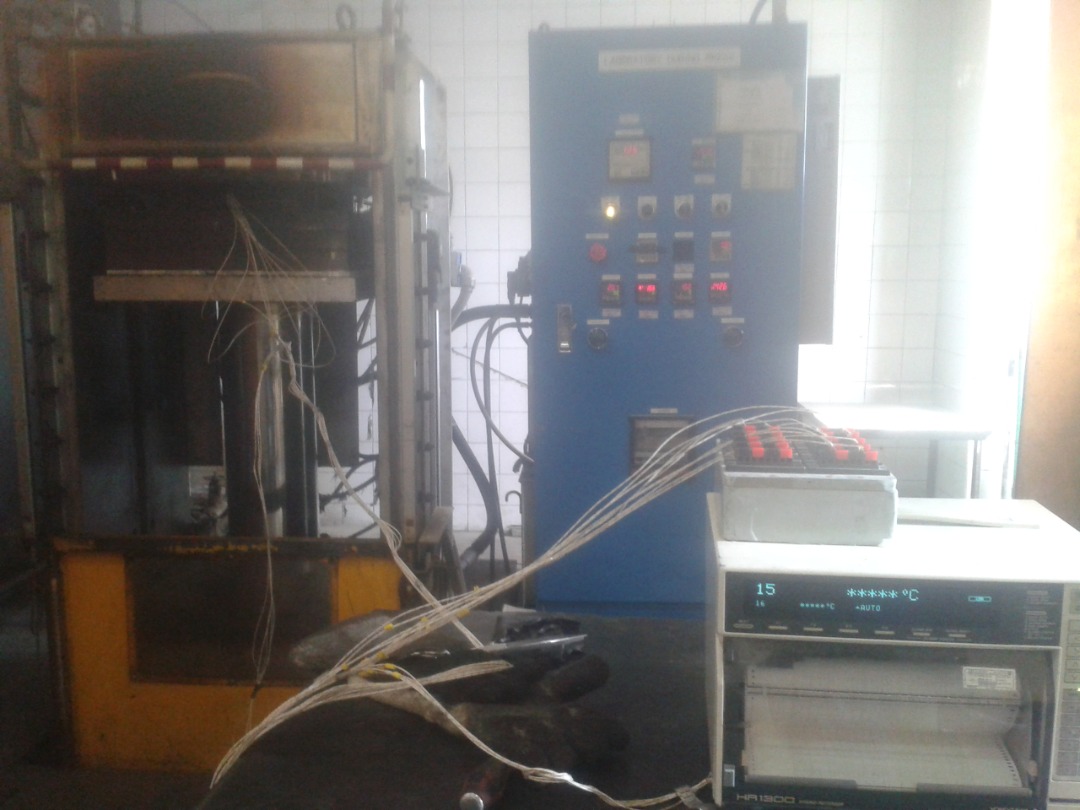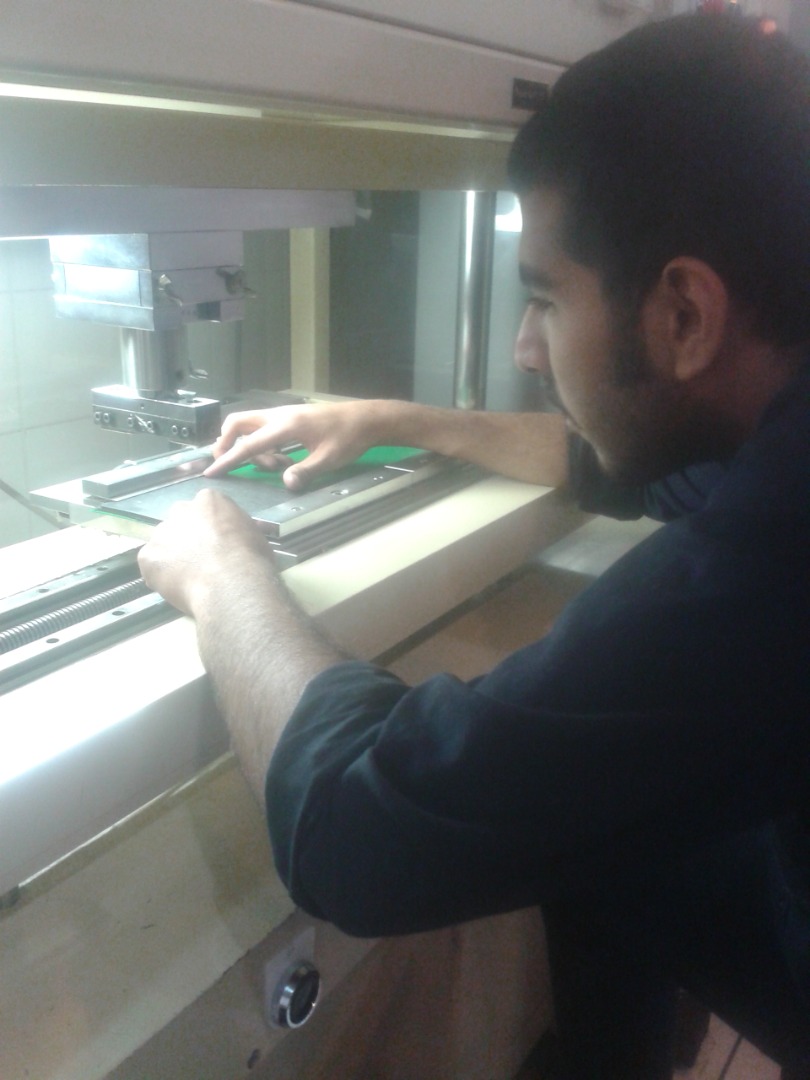Industrial Projects
Tire Curing by Hybrid Method (IR Curing after Curing Press Method)
Sponsored by Kavir Tire Co.
Abstract:
In the past years, many studies have been done about tire and most of the researchers have investigated the effects of various ingredients of compounds on its curing. In this study, the effect of pressing time on the curing of the tread compound of tire was considered. First, thermocouple test was done to see the state of the cure. The results showed that the duration of the pressure doesn’t have any effect on the state of curing. Also, finite element modeling was used to analysis of curing and heating of the prepared compound.
Then, the prepared compounds were pressed for the determined times of 0, 7.5, 15, 22.5, 30, 37.5 and 45 minutes. For all samples, the curing of samples was continued up to 45 minutes. After that, the swelling and mechanical tests were done on the samples according to ASTM standards. The molar absorption coefficient of solvent, cross linking density, permeability and diffusion coefficient, tensile strength, elongation percentage, and 300% modulus were measured in different times for each sample.
Also, hardness, abrasion, resilience, and tear strength were measured for each sample. The obtained results were analyzed by using Design Expert software. The results showed that in comparison with other samples, the vulcanizes samples in non-pressure condition had the lowest amounts of cross linking density, tensile strength, elongation percentage, 300% modulus, hardness, abrasion, and tear. Also, the samples which were made in the zero pressure condition had the highest resilience, permeability and diffusion coefficient. In addition, the abrasion of the prepared samples was approximately constant as the pressing time was increased. Finally, the optimal pressing time obtained 13.7 minutes.

